Toward a Network of Research Observatories on Biodiversity - What stakes and advances?
The ECOSCOPE conference has been scheduled to take place on May 23 - 24, 2013, in Institut Océanographique, Paris. The conference has been announced under the slogan "Toward a Network of Research Observatories on Biodiversity - What stakes and advances?"
The event will run over two days with a focus on observation and research infrastructures on biodiversity, during the first day, and data management and value, during the second.
For more Information visit: http://www.fondationbiodiversite.fr/agenda/seminaire-ecoscope
SPREE is a three-year EU (FP7) funded research project launched in July 2012. Its overarching goal is to bring the European community closer to achieving a truly sustainable and prosperous economy characterized by efficient use of resources. The project focuses on the concept of Servicizing which represents the shift from traditional purchasing to service acquisition.
The first SPREE newsletter is now a fact providing a project description, key facts, a list of partners and a workflow overview for the project. There is also a useful link to a video explaining the concept of Servicizing for the wider public.
SPREE project aims at designing innovative servicizing systems in the water, mobility and agrifood sectors that will enable a more radical and at the same time practical change in the way resources are being used and consumed. The Agent-Based Modeling (ABM) of these systems together with simulations of their potential effects will be supplemented by the composition of Servicizing Policy for Resource Efficient Economy.
For more information please find the first SPREE newsletter attached below.
A new article "A decadal view of biodiversity informatics: challenges and priorities" published by BMC Ecology focuses on the challenges and perspectives for biodiversity informatics after a decade of development. The authors Alex Hardisty and Dave Roberts alongside 77 contributions from the biodiversity informatics community share experience and set future directions of biodiversity informatics as a tool for addressing conservation and ecological issues.
Biodiversity informatics plays a central enabling role in the research community's efforts to address scientific conservation and sustainability issues. This community consultation paper positions the role of biodiversity informatics, for the next decade, presenting the actions needed to link the various biodiversity infrastructures invisibly and to facilitate understanding that can support both business and policy-makers. The community considers the goal in biodiversity informatics to be full integration of the biodiversity research community, including citizens’ science, through a commonly-shared, sustainable e-infrastructure across all sub-disciplines that reliably serves science and society alike
The full text of the article can be accessed here.
Europe’s most visible forum for ICT research and innovation, namely ICT2013, will take place from November 6 to 8th, 2013 in Vilnius, Lithuania.
This event will bring together Europe’s best & brightest in ICT research, with businesses old & new, web start-ups and digital strategists to chart a path for Europe’s ICT research policy.
Participants will have the opportunity to share their vision for the future with EU policy-makers, and see the latest advances in EU-funded ICT research.
ICT2013 will be the first opportunity to learn the details of research funding for ICT-related projects under Horizon 2020, the EU’s new research program for 2014-2020.
ICT2013 will also offer participants opportunities to showcase their most advanced research, ICT products and most innovative creations and to meet delegates with common or similar topical interests with whom they could collaborate in the future. This would be possible by organising networking sessions and holding an exhibition stand.
So as to participate, you should submit proposals:
- For networking sessions before 26 April 2013 by completing the online form,
- For exhibition, until 7th June 2013 16.00, log in here.
To follow the latest news on ICT2013 on Twitter go to @ict2013eu.
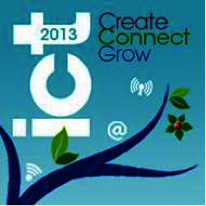
The newest newsletter of the BioVel project is now available, offering a range of biodiversity related news, including brief coverage of the EU BON Kick-off and International Symposium Workshop in February, 2013. Among the other stories covered are:
- Letter from Alex Hardisty, Project Coordinator
- Running Workflows Just Got a Whole Lot Simpler
- Friends of BioVeL: Friendships and collaborations are also blooming! (featuring news about: LifeWatch-BioVeL cooperation;; i4Life project; Micro B3 and GENSC are now friends of BioVeL.
The newsletter also contains information about the upcoming workflows and research within the project, as well about events planned for the future.
To read the article and find out more about the news stories covered click here.
I am working as a postdoctoral researcher at the Naturalis Biodiversity Center on bee systematics and bee identification. At present, my morphological studies focus on wing shape analyses using geometric morphometrics. During the pro-iBiosphere workshop and training on "e-platforms and e-tools for taxonomy" (http://wiki.pro-ibiosphere.eu/wiki/Workshops_Leiden_February_2013) that took place in February 2013 (Leiden, the Netherlands) I gained information about state-of-the-art platforms & tools that I could use for my work and learnt how to use them.
In bees, wing shape is a reliable diagnostic trait at different taxonomical levels: from families to species and sometimes even populations. This encouraged me to develop an identification tool for bee species based on wing venation patterns. During the session on "Developing organism identification apps for Android devices", given by Dr. Alexander Krings, I developed a prototype of an android app that includes morphological keys, tips for rapid identification, and general information about most common bees. This app can be a handy tool for taxonomists and naturalists to obtain information while doing field work. Of course, the thousands of published keys, papers, and books are very precious, but they are mainly available in the lab or at home. e-tools bring us highly valuable published information everywhere we go, where we need it, and where we find the bees.
My PhD research on bee systematics included description and taxonomic revision of several bee fossils. For these studies, wing shape allowed for quantitative assessment of taxonomic affinities of bee fossils with extant taxa. One of the best examples of the power of this method was the identification of a fossil bee wing (which was all that was available) as a Bombus randeckensis specimen from the Miocene. Bee fossils are rare, and until recently a comprehensive list was not available. e-platforms such as "scratchpads" (funded by the EU FP7 ViBRANT project) are an easy-to-use tool that allows sharing knowledge among taxonomists. As a result of the pro-iBiosphere training, I managed to upload the complete bee fossil list, including general information on each fossil and on the main deposits into a scratchpad. This platform facilitates open access and provides a significant help for my scientific work: the website makes available a fast search tool for taxonomical names, and allows easy publication of the new updates of our research activities.
e-tools and e-platforms for taxonomy help to diffuse and share scientific knowledge among taxonomists and the general public. Training on these tools and platforms invites taxonomists to change their way of thinking about the design of their projects and on how to effectively disseminate their results to a wider audience. With continuously updated information, collaborative platforms, interactive keys, and android apps, taxonomy can hardly be considered an ‘old-fashioned’ field!. If scientists want to increase their impact on society, they have to follow the evolution of our knowledge-hungry society.
pro-iBiosphere is helping to close the gap between technology and taxonomists!.
* The bee identification app and the bee fossil scratchpad are under construction and will be available very soon
Thibaut DeMeulemeester, Postdoctoral researcher (Naturalis Biodiversity Center, Leiden, the Netherlands). Contact: [email protected]; [email protected]
Looking for even more ways to interact with the pro-iBiosphere project and the main stakeholders in the field, while getting real time access to the latest news, event and project activities information?
 |
Facebook - like us here
- Access information on the latest biodiversity research developments
- Interact with key stakeholders in the field
- Discover our project events latest pictures and videos
|
 |
Twitter - follow us here
- Be instantly updated on the latest project, biodiversity and EU news
- Get involved in the discussions during project events
- Follow other key biodiversity initiatives and players
|
 |
LinkedIn - join us here
- Get the latest news on EU fundings
- Participate in the fruitful discussions and debates
- Promote your project among experts
|
The first meeting of the Platform's plenary (IPBES-1) took place in Bonn Germany from 21 to 26 January 2013. BiodiversityKnowledge together with SPIRAL, EBONE and EUBON - organized a side event on Regional support approaches to IPBES – Europe as showcase. This side event aimed to outline the importance of regional interactions to support and facilitate input into the work programme activities of IPBES. (Full report, pdf)
The Research Data Alliance (RDA) has been recently launched. Its First Plenary took place between 18-20 March, 2013 in Gothenburg, Sweden. The hot topic of the Plenary was the RDA vision towards open access data without barriers. The 3 days of meetings and working sessions brought the research data community together to contribute and set milestones for the future work of the RDA towards open access data-driven innovation.
Over the last decade, significant investments have been made all over the globe
for developing scientific data infrastructures to support the work of research communities and improving shared access to data. There is a common understanding that solutions must be global and that the development of an integrated and interoperable data domain can only be achieved through increased global cooperation.
As "big data" emerges as an international priority, the Research Data Alliance (RDA) is a newly formed organization whose goal is to accelerate data-driven innovation world-wide through research data sharing and exchange.
At its first Plenary, the RDA was launched by sponsors from the European Commission, the U. S. Government and the Australian Government and leaders in the data community. The Plenary was used as a working meeting to accelerate discussion, Working and Interest Group interaction, and data community development.
ICSU-WDS Data Publication Charter: http://www.icsu-wds.org/working-groups/data-publication
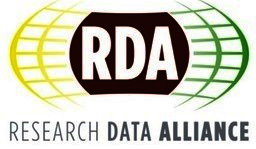
BiodiversityKnowledge is organizing its second international conference on September 24th to 26th 2013.
For the venue we choose the green and atypical Jerusalemkirche, right in the middle of Berlin between Checkpoint Charlie and the Jewish museum.
The objective of this second conference is to discuss and finalize the recommended design of a future Network of Knowledge (NoK) on biodiversity and ecosystem services in Europe.
Registration for the conference will be open in beginning of April 2013.
More information on the conference will soon be available on conference website.

We kindly invite you to attend the BiodiversityKnowledge side event on the first day of the ALTER-Net Conference "Science Underpinning the EU 2020 Biodiversity Strategy". The primary focus of the conference will be the objectives and targets of the EU's 2020 Biodiversity Strategy, which should be realized by the end of this decade. Being a science-policy interface network, ALTER-Net wants to help the EU in realizing these targets by providing scientific knowledge, e.g. by pointing out possible weaknesses, opportunities and necessities, and by helping to find solutions and evidence-based actions.
The BiodiversityKnowledge session on Monday afternoon will first present our project's approach in short, concise talks and then give the opportunity for discussing major issues related to governance of the structure, involvement and acknowledgment, quality control and other main challenges.

A new "LinkOut" feature introduced by the National Center for Biotechnology Information (NCBI) NCBI’s allows the easy linking to content on PubMed and GenBank. Dryad has already introduced the feature benefitting from easy and fast linking of associated content to the two resources.
PubMed and GenBank, from the National Center for Biotechnology Information (NCBI), are hugely popular resources for searching and retrieving article abstracts and nucleotide sequence data, respectively. PubMed indexes the vast majority of the biomedical literature, and deposition of nucleotide sequences in GenBank or one of the other INSDC databases is a near universal requirement for publication in a scientific journal. LinkOut allows the data from an article to be distributed among repositories without compromising its discoverability.
Dryad, intends to expand on this feature in a couple of ways. First, it is planned to make Dryad content searchable via the PubMed and GenBank identifiers, which because of their wide use will provide a convenient gateway for other biomedical databases to link out to Dryad. Second, open web standards will be used to expose relationships between content in Dryad and other repositories, not just NCBI.
The 10th e-Infrastructure Concertation Meeting (March 6-7, 2013 - Brussels) was organised by the European Commission (e-Infrastructure Unit, DG CONNECT) with the support of the e-ScienceTalk project. The main aim of the meeting was to bring EU funded infrastructure projects together to discuss issues related to the completion of the EC 7th Framework Programme (FP7) and the start of the framework of Horizon 2020 (2014-2020).
The first day was dedicated to discuss the EU e-Infrastructure vision, impact and metrics. The second day focused on the e-infrastructure priorities (parallel tracks) and on future sustainability of e-infrastructures. The meeting provided excellent networking opportunities and helped participants to gain a better understanding of the current and the future Horizon 2020 programme's challenges. Slides of the meeting are available on the event web-page here.
By Siti-Munirah, M.Y. ([email protected]) Forest Research Institute Malaysia
I am a Research Officer and a young botanist at the Kepong Herbarium (KEP), Forest Research Institute Malaysia (FRIM), Kuala Lumpur, Malaysia. At present, I'm working for the Flora of Malaysia project, revising families for the Flora of Peninsula Malaysia, such as, Lythraceae, Rafflesiaceae, Droseraceae, Cabombaceae, Ranunculaceae and a few others. I am also interested in Rafflesia (a parasitic group of plants), Drosera (a carnivorous plant group), and Cabomba (an invasive plant group). From my botanical exploration in the green forests of Malaysia I also focus on, Sonerilla, Argostemma and Thismia. I have been conducting fieldwork throughout Peninsular of Malaysia since 2007, and have collected more than 958 herbarium specimens. I am also involved with monitoring Rafflesia distribution and in its conservation in Malaysian Peninsular.
After attending the pro-iBiosphere workshops and hands-on training sessions (http://wiki.pro-ibiosphere.eu/wiki/Workshops_Leiden_February_2013), I gained new knowledge and understanding on how to use various e-platforms and e-tools for taxonomy. It benefited my career path development as a taxonomist and gave me the opportunity to share and spread the information among my colleagues, also within my country.
Recently, I have published my first new species via Phytokeys, my first encounter with an online journal. The whole process only took around 4 months.
The main resources of biodiversity data are from basic research, therefore the foundation support for basic research exploring biodiversity should be available and sustained persistently. In my opinion, e-tools and e-platforms for taxonomy should be taught during degree or school level and applied for masters and PhD students. The extensive promotion should be done widely especially in the countries with high biodiversity. This will help to develop a good biodiversity center base for a region or country key players.
Technology transfer should be an important concern by the institutes involved in biodiversity studies.
I think pro-iBiosphere is in the right direction, pro-iBiosphere is functioning as the meeting point for those who are involved with biodiversity activities, such as scientists, taxonomists, IT people and developers. It also fosters collaboration among projects and key players. Last but not least, I would like to suggest a 'One stop centre: Biodiversity of the world' website, where all the related links of Biodiversity are gathered in one place.
The first pro-iBiosphere report on "Diversity and strengths of existing business models and discussion of sustainability (D6.3.1)" was released on March 4, 2013. This report summarises the exploitation plans foreseen to date by each project partner and the business models they use. The next phase will be to bring this information in the light of a "market context" or "market background".
In order to gather inputs from project partners, a questionnaire was sent to all pro-iBiosphere consortium partners. The questionnaire included three parts, addressing:
The pro-iBiosphere workshops that took place on the 11th to 14th of February 2013 aimed to get taxonomists and IT developers together to discuss digital tools for taxonomy; the digital mobilization of legacy literature and developments towards the next generation of digital taxonomic literature.
In a packed agenda, which included an intense day of training workshops, participants learned about Biovel, Charparser, EDITor, Android Apps, BiowikiFarm, Scratchpads, XPer2 and many more active projects.
After the event attendees were asked to evaluate the event. Forty percent of the 101 participants responded to our questionnaire and 88% of them rated the content either "excellent" or "very good". Other positive indicators of a successful event were that only one person would not recommend our events to others and only one person had no intension to attend another pro-iBiosphere event.
The event was a good opportunity for people to network. Almost three-quarters felt they had made five or more useful contacts. We also received a positive evaluation for the level of interest in the event. Again more than three-quarters of the respondents rated it "very interesting" and only two rated it "not so interesting".
We hope to do even better during our next event in May (21st-23rd) 2013, when we examine the requirements of the downstream users of taxonomic information and mechanisms for paying for taxonomic services and coordination and routes for cooperation.
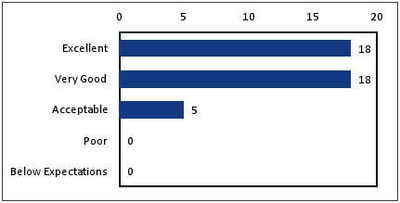 How the participants rated the content of the workshops
How the participants rated the content of the workshops
On Friday the 15th of February 2013, meetings with the pro-iBiosphere Advisory Board (AB) and Consortium members took place.
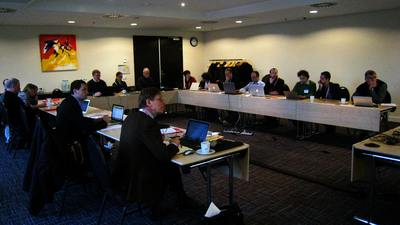
Monographs are fundamental for progress in systematic botany. They are the vehicles for circumscribing and naming taxa, determining distributions and ecology, assessing relationships for formal classification, and interpreting long-term and short-term dimensions of the evolutionary process. Despite their importance, fewer monographs are now being prepared by the newer generation of systematic botanists, who are understandably involved principally with DNA data and analysis, especially for answering phylogenetic, biogeographic, and population genetic questions. As monographs provide hypotheses regarding species boundaries and plant relationships, new insights in many plant groups are urgently needed. Increasing pressures on biodiversity, especially in tropical and developing regions of the world, emphasize this point. The results from a workshop (with 21 participants) reaffirm the central role that monographs play in systematic botany. But, rather than advocating abbreviated models for monographic products, we recommend a full presentation of relevant information. Electronic publication offers numerous means of illustration of taxa, habitats, characters, and statistical and phylogenetic analyses, which previously would have been prohibitively costly. Open Access and semantically enhanced linked electronic publications provide instant access to content from anywhere in the world, and at the same time link this content to all underlying data and digital resources used in the work. Resources in support of monography, especially databases and widely and easily accessible digital literature and specimens, are now more powerful than ever before, but interfacing and interoperability of databases are much needed. Priorities for new resources to be developed include an index of type collections and an online global chromosome database. Funding for sabbaticals for monographers to work uninterrupted on major projects is strongly encouraged. We recommend that doctoral students be assigned smaller genera, or natural portions of larger ones (subgenera, sections, etc.), to gain the necessary expertise for producing a monograph, including training in a broad array of data collection (e.g., morphology, anatomy, palynology, cytogenetics, DNA techniques, ecology, biogeography), data analysis (e.g., statistics, phylogenetics, models), and nomenclature. Training programs, supported by institutes, associations, and agencies, provide means for passing on procedures and perspectives of challenging botanical monography to the next generation of young systematists.
Huge data encompassed into a unique georeferenced macrobenthic assemblages database
A new peer-reviewed data paper offers a comprehensive, open-access collection of georeferenced biological information about the Antarctic macrobenthic communities. The term macrobenthic refers to the visible-for-the-eye organisms that live near or on the sea bottom such as echinoderms, sponges, ascidians, crustaceans. The paper will help in coordinating biodiversity research and conservation activities on species living near the ocean bottom of the Antarctic.
The data paper "Antarctic macrobenthic communities: A compilation of circumpolar information", published in the open access journal Nature Conservation, describes data from approximately 90 different expeditions in the region since 1956 that have now been made openly available under a CC-By license. The paper provides unique georeferenced biological basic information for the planning of future coordinated research activities, for example those under the umbrella of the biology program Antarctic Thresholds – Ecosystem Resilience and Adaptation (AnT-ERA) of the Scientific Committee on Antarctic Research (SCAR). The information collected could be also beneficial for current conservation priorities such as the planning of Marine Protected Areas (MPAs) by the Commission for the Conservation of Antarctic Marine Living Resources (CCAMLR).
The expeditions were organised by several famous explorers of the Antarctic. The area covered by the paper consists of almost the entire Southern Ocean, including sites covered by a single ice-shelf. The vast majority of information is from shelf areas around the continent at water depth shallower than 800m. The information from the different sources is then attributed to the classified macrobenthic assemblages. The results are made publicly available via the "Antarctic Biodiversity Facility" (data.biodiversity.aq).
A specific feature of this paper is that the manuscript was automatically generated from the Integrated Publishing Toolkit of the Antarctic Node of the Global Biodiversity Information Facility (AntaBIF IPT) and then submitted to the journal Nature Conservation through a novel workflow developed by GBIF and Pensoft Publishers. (see previous press release). Data are made freely available through the AntaBIF IPT, and sea-bed images of 214 localities through the data repository for geoscience and environmental data, PANGAEA- Data Publisher for Earth and Environmental Science (sample: http://doi.pangaea.de/10.1594/PANGAEA.198682).
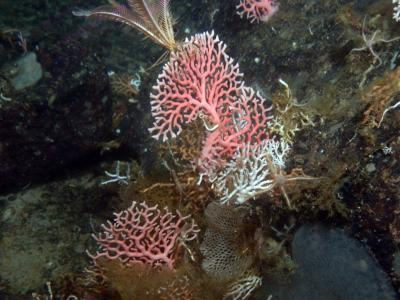 This picture shows the hydrocorals also known as sea fan. (@Julian Gutt, Alfred Wegener Institute)
This picture shows the hydrocorals also known as sea fan. (@Julian Gutt, Alfred Wegener Institute)
The European Union funded EU BON "Building the European Biodiversity Observation Network" project now holds its official Kick-off Meeting, taking place from 13 to 15 February 2013 in Berlin. An International Symposium "Nature and Governance – Biodiversity Data, Science, and the Policy Interface" precedes the kick-off (11-12 February 2013), to discuss the current landscape of monitoring and integration of biodiversity data, and stress on the relevance of EU BON on both European and global scales.
The EU BON project will be working towards advancement and development of the technological platform for GEO BON (Group on Earth Observations Biodiversity Observation Network), which operates and systemizes biodiversity data on a global scale.
Launched in 2005, the Group on Earth Observations, GEO, is a response to the need to address issues of biodiversity preservation as well as eight other societal benefit areas: agriculture, climate, disasters, ecosystems, energy, health, water and weather. The GEO BON venture was established to coordinate the provision of sustained, cross-cutting, integrated and accessible earth observation data and information.
The aim of GEO BON is to build a monitoring network that presents a full picture of what is happening to biological diversity worldwide. The system will use masses of biological information with data and forecasts on climate change, pollution, land use, biological invasions and other threats to biodiversity. Currently, the lack of comprehensive information about the world's biological resources continues to undermine the efforts of policymakers and managers to set priorities, elaborate strategies and assess the effectiveness of their actions.
EU BON project offers an innovative approach in terms of integration of biodiversity information system from on-ground to remote sensing data, for addressing policy and information needs in a timely and customized way. The project will reassure integration between social networks of science and policy and technological networks of interoperating IT infrastructures. EU BON's aims to facilitate GEO BON's work towards the creation of global biodiversity data network through contributing to the overall European capacities and infrastructures for environmental information management.
###
All interested parties are most welcome to attend the symposium or to follow it on Twitter, Facebook, or Google+.
Additional information
EU BON (2012) stands for "Building the European Biodiversity Observation Network" and is an European research project, financed by the 7th EU framework programme for research and development (FP7). EU BON seeks ways to better integrate biodiversity information and implement into policy and decision-making of biodiversity monitoring and management in the EU.
GEO BON stands for "Group on Earth Observations Biodiversity Observation Network". It coordinates activities relating to the Societal Benefit Area (SBA) on Biodiversity of the Global Earth Observation System of Systems (GEOSS). Some 100 governmental, inter-governmental and non-governmental organisations are collaborating through GEO BON to organise and improve terrestrial, freshwater and marine biodiversity observations globally and make their biodiversity data, information and forecasts more readily accessible to policymakers, managers, experts and other users. Moreover, GEO BON has been recognized by the Parties to the Convention on Biological Diversity. More information at: http://www.earthobservations.org/geobon.shtml.
 GEO BON Logo
GEO BON Logo





 pro-iBiosphere wiki platform
pro-iBiosphere wiki platform
 RSS news
RSS news

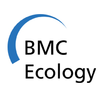

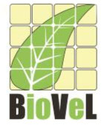




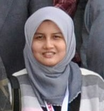

 Deliverable D6.3.1
Deliverable D6.3.1



